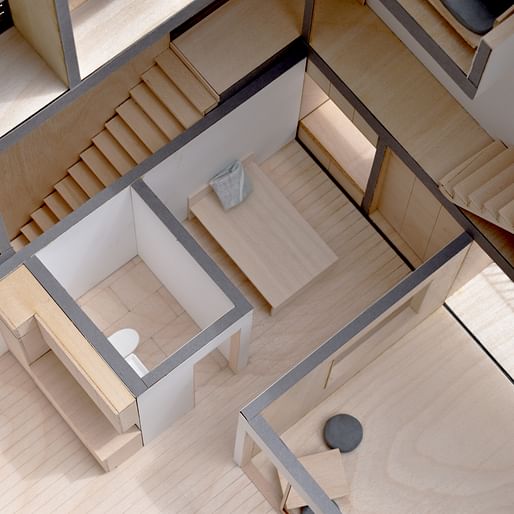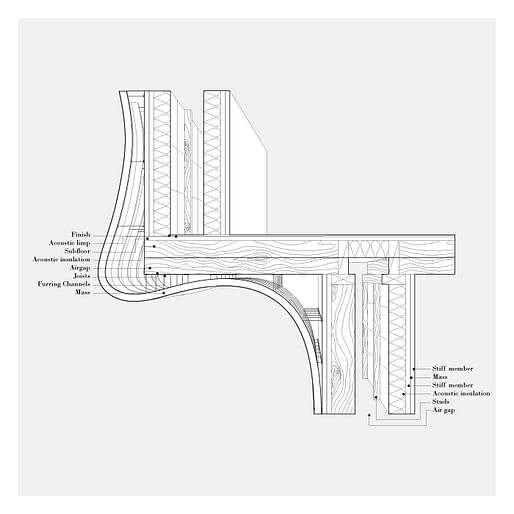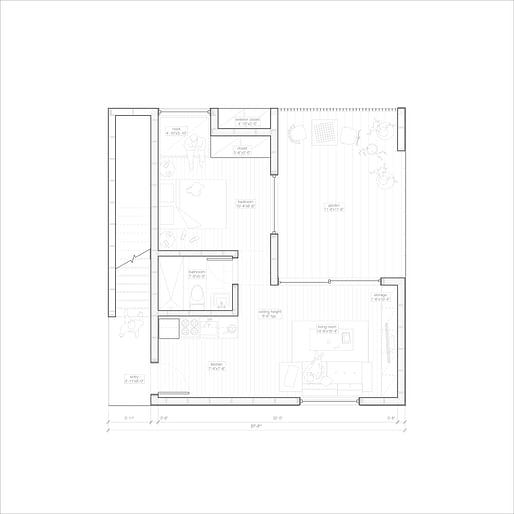

First-year professional degree students of Yale School of Architecture are hard at work designing and building a new three-unit affordable housing complex in New Haven's Hill neighborhood.
Formally known as the Jim Vlock First Year Building Project, the year-long studio has been an annual ritual at the university since 1989 when then-dean Charles Moore instituted the program. Since then, Yale students have worked to design and build homes for over 50 New Haven families, according to the university. This year's run of the program is being carried out in partnership with Columbus House, a non-profit organization that works to address homelessness in the New Haven area.

Initially divided up into competing teams, the students in the studio started by tackling a series of fundamental conceptual exercises to develop approaches for addressing issues of inhabitation, enclosure, unit aggregation, and interior design.
For the studio, the budding architects are asked to design a trio of residences that work to redefine conventional notions of the "fundamental spatiality of human dwelling" by creating a new approach that "eschews the typical regulations and clearances that define basic building activity and challenges them with uniquely-defined parameters," according to a project website.

The approach requires students to identify which architectural elements and building systems are to be shared by the three units, for example, an exploration that took various forms in the study exercises. One idea involves creating a shared infrastructural plinth that all three garden apartments sit atop, resulting in a central terrace between the units. In another proposal, students positioned rectilinear townhomes slightly askew from one another to create wedge-shaped utility chases that can deliver plumbing and other needs vertically.
Because the students are designing and building the complex themselves, the course interrogates construction detailing, as well. While exploring different ideas of enclosure, students generated one scheme that uses a double layer of framing studs to shape a wide internal air gap to better insulate the home. The approach extends to a freeform cladding system that hangs off of the structure, a maneuver that creates a secondary air gap behind a bulbous decorative exterior.

Ultimately, the class is working to erect a contextual building proposal crafted by Team C, a roughly square-shaped three story home that is topped by a shed roof and features large punched openings containing loggia and balcony spaces. The home, according to the designers, takes inspiration from New Haven’s traditional triple-decker housing type that is made of of three stacked units.

As a result, the building contains three walk-up apartments of similar floor plans, except that instead of being stacked identically one atop the other as might conventionally be the case, each unit rotates in relation to the one below. The rotations serve to accommodate the location of peripheral access stairs while also generating formal and visual variety along the building's facades from the shifting balcony spaces. The units each feature a kitchen-great room arrangement that uses a central bathroom to divide these spaces from a bedroom and patio wing.
The project is currently under construction. Students are expected to finish the project toward the end of September 2019.
13 Comments
Strange angles aren’t cheap and in fact exponentially increase the cost of construction. Strange angles, drawn by designers, also shows an insensitivity of the designer toward the builder in the field. Additionally, black finishes exposed to the sun break down sooner - from expansion and contraction - increasing maintenance costs. The dark materials also increase interior heat gain. These professional design students need more intensive study of materials and how the environment interacts with buildings.
yourrightmrwilson
PARTY POOPER!
not to mention terribly derivative of Nishizawa circa 2005 *strokes beard*
c'mon y'Ale y'all gotta stop living in the PAST!
Fantastic thermal bridging in that detail. Perhaps it's done ironically.
1st year and they get to learn, and build? Fuck these complainers. All I ever hear on this site, and in practice, is that students don't come out prepared for the "real world" and here these students are, learning, building and making mistakes, so they can become better stewards of design. Fffffffcuk youse.
I think we agree on something
^^FEATURED COMMENT^^
So the plight of students who then can't find work because of having no marketable skills is ok? If you're a genius or have something to say, then do it. Learning to design something buildable never stopped the early modernists who studied rational planning and historic buildings.
I would have them build a Katrina Cottage first (They could make a New England version with cedar shingles) and then go from there. I would not inflict generic New Haven architecture on anyone.
Really, a commendable and I would think tremendously exciting project for a student. The winning design has more character than might first appear—zoom in on the first image. Still, it's rather spartan and a tad funky.
Homes just next door on Plymouth, spartan themselves, in fact meager. I would think the greatest design challenge would be to design something that fits in but also sets an example in style that lifts the neighborhood in character, influencing future neighboring renovation and reconstruction. I realize that's easier said than done.
And perhaps set an example for all middle to low income housing built now, which is dismal.
From the link above, a full description of the project's challenges:
As the culmination of three experimental exercises, ENVIRONMENT synthesizes the results and deploys them into the design and detailing of a three-dwelling residential building situated in New Haven, CT. The structure, located at 162-168 Plymouth Street, is intended to reflect the complex social, cultural, economic and political forces of the site, in addition to the geographic and environmental conditions in which it exists. Functional requirements stipulated internal separation of three one-bedroom apartments within a single envelope and encouraged the utilization of renewable energy, while particular energy was dedicated to understanding the power of architecture to define private and public identity within a vibrant residential community.
Cf:
https://www.archdaily.com/9209...
"One of these things is not like the others
One of these things just doesn't belong
Can you tell which thing is not like the other
before I finish this song?"
One of these things
Block this user
Are you sure you want to block this user and hide all related comments throughout the site?
Archinect
This is your first comment on Archinect. Your comment will be visible once approved.